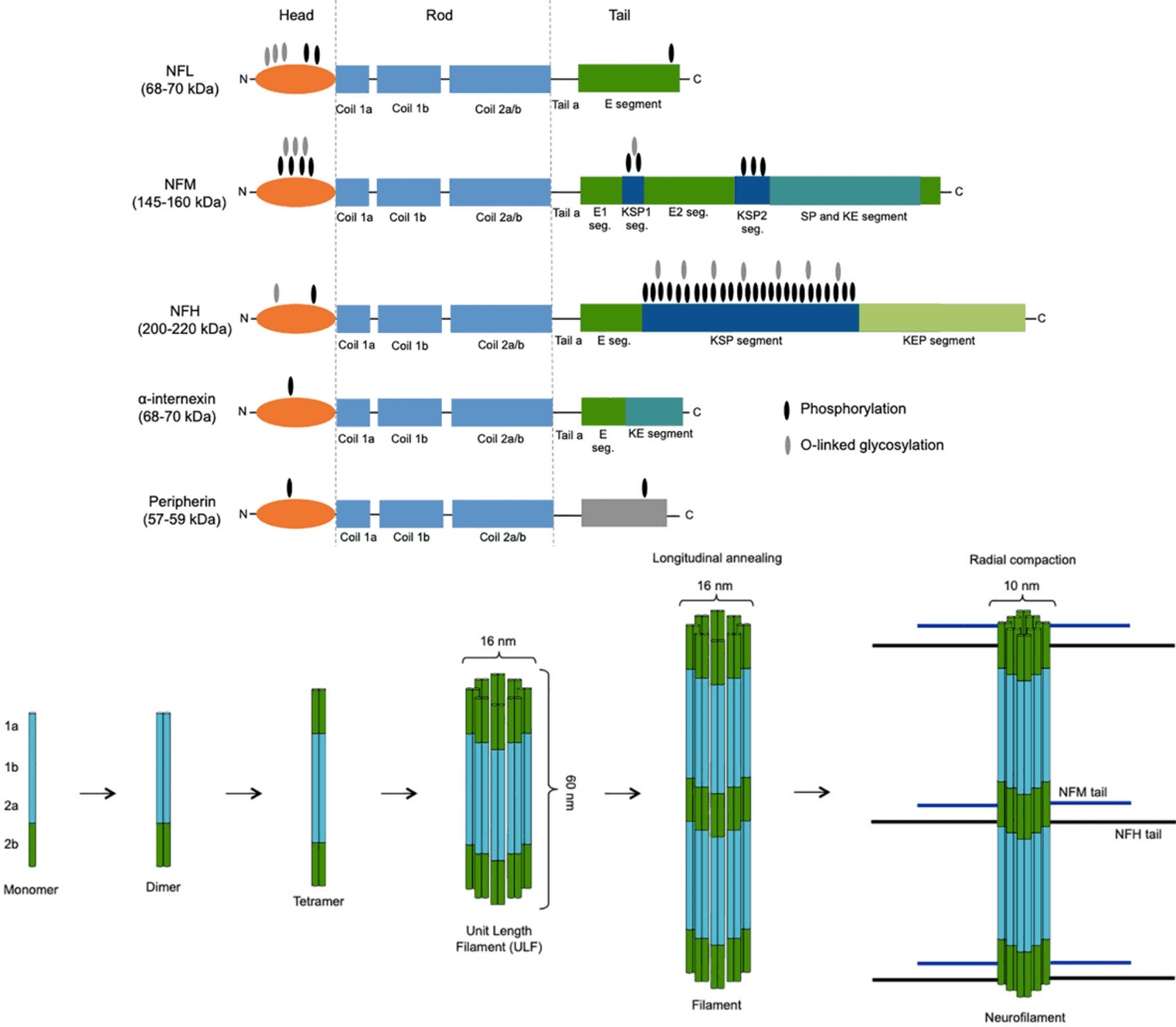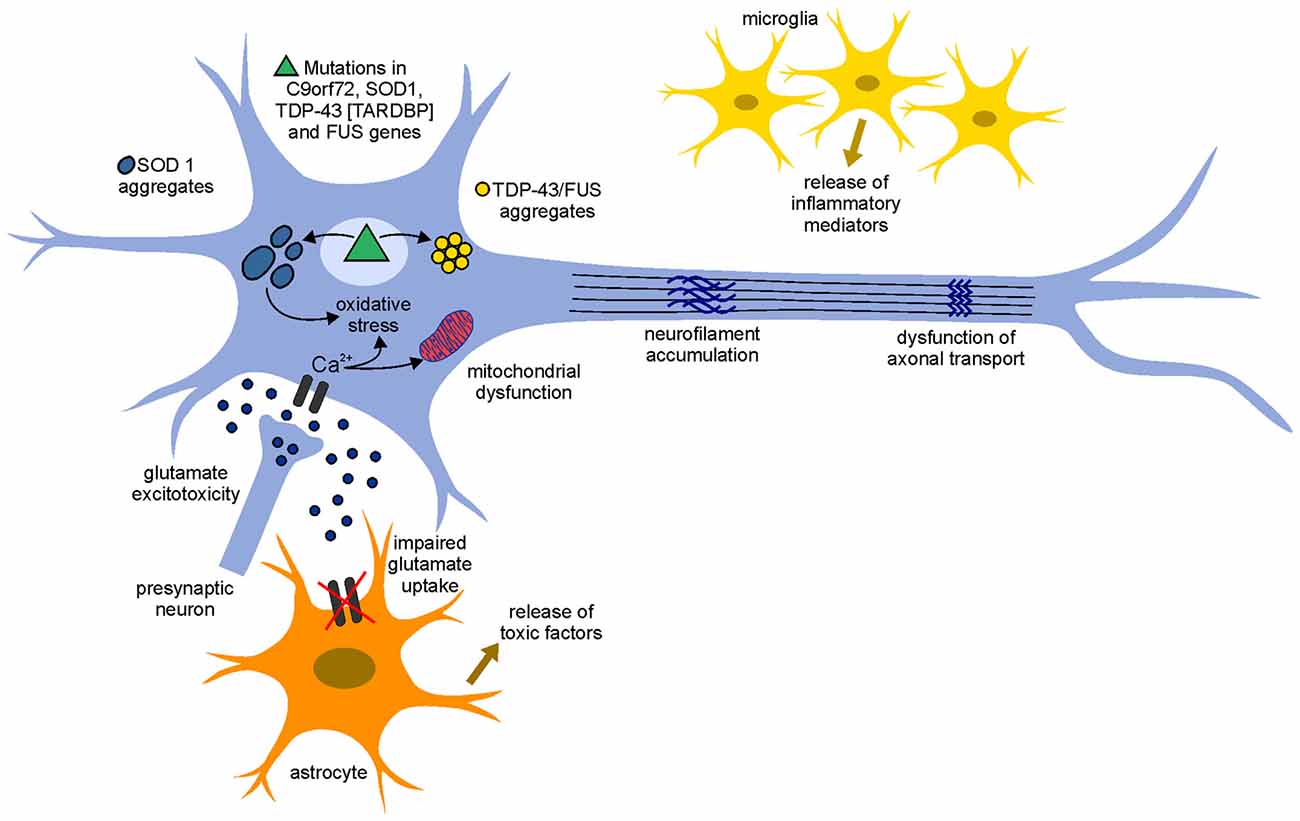NAA Services for Anti-Neurofilament (NF) Antibody
Neurofilament (NF) has recently emerged as a universal biomarker of neurodegeneration and has been a research hotspot for several years. As an industry leader in the field of amyotrophic lateral sclerosis (ALS) disease research and natural autoantibody (NAA) analysis, Creative Biolabs is committed to providing the most comprehensive antibody services for our global clients. With our extensive experience and advanced platform, we provide a range of autoantibody-related services against NF marker for the diagnosis of ALS.
Background of Anti-neurofilament (NF) Antibody
NFs from the central nervous system (CNS) are heteropolymers that are composed of four subunits, namely neurofilament heavy, medium and light polypeptides (NFH, NFM and NFL; 200, 150 and 68 kDa, respectively), as well as α-internexin, whereas in the peripheral nervous system, NFs are made up of NFH, NFM, NFL and peripherin. In some pathological conditions, NFs can accumulate in large numbers within cell bodies and proximal axons of affected neurons. In patients with ALS, these accumulations are a hallmark of the pathological lesion. Normally occurring anti-NF NAAs were reported to be reactive with the 200 kDa subunit. Antibodies against the 68 kDa subunit cross-react with the neuronal surface protein. It is indicated that the anti-NF NAAs, which are present in 25% of ALS patients’ sera, can react with axons and are directed against different subunits of NF. They are involved in an autoimmune process in a subgroup of ALS patients, suggesting the potential as a biomarker for ALS.
 Fig.1 Domain structure of NF subunits and NF assembly.1
Fig.1 Domain structure of NF subunits and NF assembly.1
The Role of Anti-NF Antibody in Amyotrophic Lateral Sclerosis (ALS)
ALS is characterized by degeneration of large pyramidal neurons in the motor cortex, the corticospinal tracts, and the motor neurons in the spinal cord anterior horns. Several antibodies, detected with variable frequency, are associated with a subset of ALS patients. One of the most frequently described pathologic findings is the presence of aberrant NF accumulations in pericarya and proximal axons of motor neurons. The viral or bacterial infections that frequently occur during the course of ALS could contribute to the high levels of anti-NF NAAs either by a non-specific increase in natural antibody synthesis or by inducing a specific response because of molecular mimicry with foreign antigens.
 Fig.2 Pathogenetic mechanisms involved in ALS. (Bonafede, 2017)
Fig.2 Pathogenetic mechanisms involved in ALS. (Bonafede, 2017)
What We Can Do about NAA?
Equipped with our well-established platforms and experienced scientists, we can provide comprehensive NAA services, from NAA detection, NAA profiling, to NAA epitope mapping. A wide spectrum of NAA products is also available for your choice.
Features of our Anti-NF Antibody Services Including but Not Limited to
- Fast turnaround time and competitive pricing to meet your time and cost budget
- Personalized services to satisfy your specific demand
- Comprehensive platform with high accuracy and specificity to reduce the repeats
- Best after scale
Studies suggest the involvement of anti-NF NAAs in an autoimmune process in a subgroup of ALS patients. At Creative Biolabs, our seasoned scientists are confident in offering the custom NAA services for NF biomarkers. Creative Biolabs has extensive expertise and experience to meet customized requirements of your research and project. Please do not hesitate to contact us for more details.
References
- Verde, Federico, Markus Otto, and Vincenzo Silani. "Neurofilament light chain as biomarker for amyotrophic lateral sclerosis and frontotemporal dementia." Frontiers in neuroscience 15 (2021): 679199.
- Bonafede, Roberta, and Raffaella Mariotti. "ALS pathogenesis and therapeutic approaches: the role of mesenchymal stem cells and extracellular vesicles." Frontiers in cellular neuroscience 11 (2017): 80.
Related Services:
- NAA Services for Anti-Sulfoglucuronyl Paragloboside (SGPG)
- NAA Services for Anti-Oxysterols Antibody

